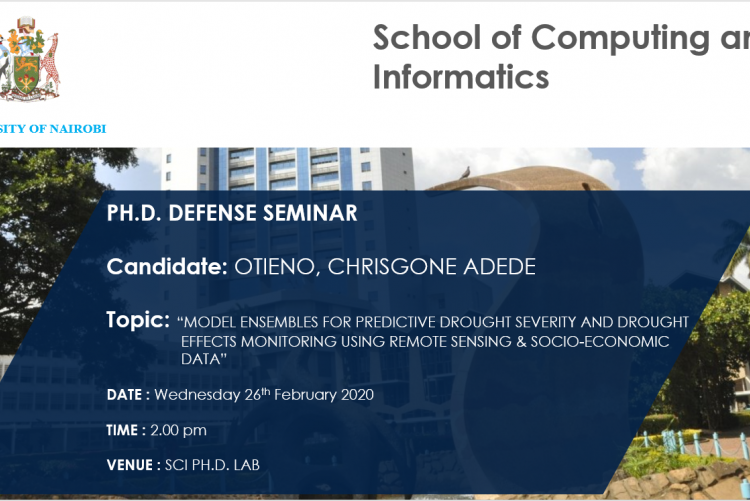Droughts, with their increasing frequency of occurrence, especially in the Greater Horn of Africa (GHA), continue to negatively affect lives and livelihoods. For example, the 2011 drought in East Africa caused massive losses documented to have cost the Kenyan economy over $12bn.Consequently, the demand is ever-increasing for ex-ante drought early warning systems with not only the ability to offer drought forecasts with sufficient lead times but that are both stable and are of high bias. In this study, we build predictive models one month ahead for both drought severity and drought effects. Vegetation condition index aggregated over 3 months (VCI3M) and nutrition of children below 5 years as indicated by middle upper arm circumference (MUAC) are used as the proxy variables for drought severity and drought effects respectively. We present the performance of both homogenous andheterogenous model ensembles in the prediction of drought severity and droughteffects using the study case techniques of artificial neural networks (ANN) andsupport vector regression (SVR). For each of the homogenous and heterogenous model ensembles, we investigate the performance of three model ensembling approaches: linear averaging, ranked weighted averaging and model stacking.Applying the approach of over-produce then select, the study used 17 years of remote sensing data and 10 years of socio-economic data to build 244 individual ANN and SVR models from which 111 models were selected for the building of the model ensembles. The results indicate the superiority of heterogenous model ensembles to both homogenous model ensembles and individual champion models.Model stacking as applied in heterogenous model ensembles is shown to besuperior to both simple average and weighted average ensembles. The heterogenous stacked model ensemble recorded an R2 of 0.94 in the prediction of drought severity as compared to an R2 of 0.83 and R2 of 0.78 for both ANN and SVR champion models respectively. The superiority of the heterogenous stacked ensemble is extended to classification in which an accuracy of 80% is recorded as compared to 69% and 71% for the ANN and SVR champion models respectively. Additionally, the poor performance of champion models in outlier classes is mitigated on by the use of stacked heterogenous model ensembles. We conclude that despite the computational resource intensiveness of the model ensembling approach to drought prediction, there turns in terms of model performance is worth the investment, especially given the recent exponential increase in computational power.
- Log in to post comments

